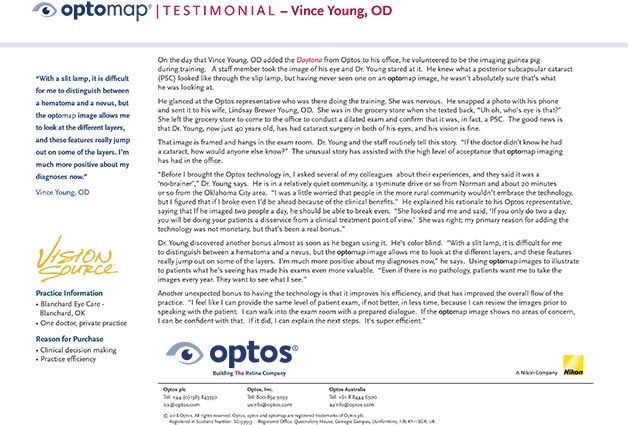While the exact causes of cataracts are still not entirely understood, annual eye exams are still important for the diagnoses and treatment of their formation. Even with precautions and regular exams, by the year 2020, more than 30 million Americans are expected to develop cataracts.
Most cataracts occur gradually as we age and don’t become bothersome until after age 55. However, cataracts can also be present at birth (congenital cataracts) or occur at any age as the result of an injury to the eye (traumatic cataracts). Cataracts can also be caused by diseases such as diabetes or can occur as the result of long-term use of certain medications. While typically forming in both eyes, cataracts may not grow at the same rate. They can develop slowly or quickly, or progress to a certain point, then not get any worse. As a result, one may not notice substantial changes in their sight. Sometimes they can significantly precede symptoms and can be so subtle as to go unnoticed without a comprehensive eye exam.
When Vince Young, OD introduced Daytona, into his practice, he volunteered to be the imaging guinea pig while his staff trained on the device. He was unnerved when he reviewed his images and somewhat uncertain about what he was seeing. He knew what a posterior subcapsular cataract (PSC) looked like through the slit lamp but was surprised by what the optomap image revealed. Concerned, Young sent the image to his wife, Lindsey Brewer Young, OD. When she reviewed the image on her phone she immediately responded, questioning whose eye she was reviewing. Learning it was her husband’s image she returned to the clinic, conducted a dilated exam, and confirmed that it was indeed a PSC that had been revealed in the optomap image.
At 40 years old, Dr. Young had no reason to suspect he would have cataracts as they are more typically associated with the elderly population. He also exhibited no symptoms or clouded vision. A subcapsular cataract occurs at the back of the lens and can be caused by a variety of circumstances such as systemic issues and some forms of medication. PSCs are also more difficult to remove due to adhesion of the cataract to the lens capsule as well as an increased risk of capsule rupture during removal. However, Young’s cataract surgery on both eyes was successful and today his vision is fine.
Young reports that while this initial training episode was distressing, the image itself has become an excellent tool in communicating the importance of optomap and comprehensive exams to his patients. The image hangs in the exam room and Young and his staff frequently share the story. “If the doctor didn’t know he had a cataract, how would anyone else know?” they say, underscoring the value of retinal screening. The unusual story has assisted with the elevated level of acceptance the optomap imaging has had in Young’s office.
Young stresses that the exam experience has changed with optomap in an extremely valuable way when it comes to patient education. optomap enables him to help his patients understand exactly what is occurring in their eye, or even just to provide reassurance that all is well. “Even if there is no pathology, patients want me to take the images every year. They want to see what I see.”
Dr. Young’s story demonstrates that it is not only possible for practitioners to image themselves and discover retinal pathology but also discover if significant opacities reside in the media as well. The importance of regular, annual comprehensive eye exams cannot be expressed enough in the discussion of eye and systemic health. Visit our website to learn more about the benefits of optomap in protecting your eye health and to find an eyecare provider who used optomap technology in their practice.
